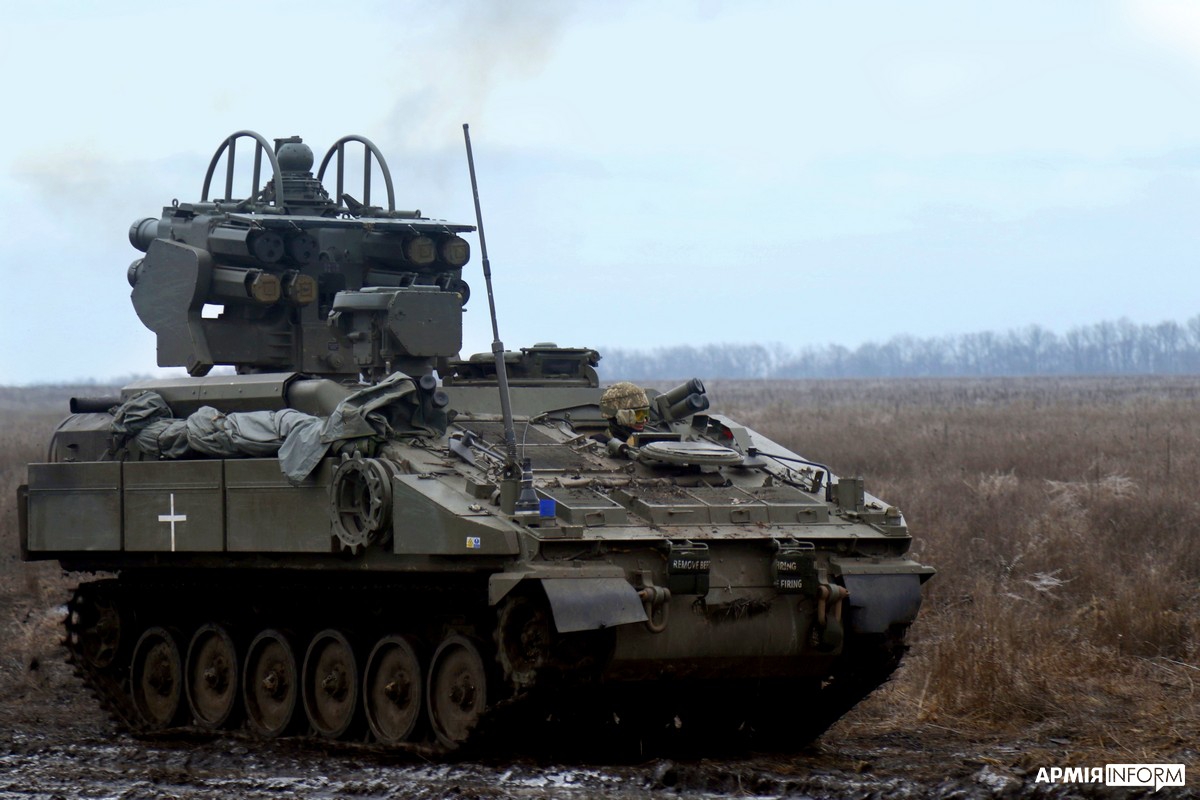Previously, British MANPADS very rarely demonstrated their capabilities. However, during the Russian-Ukrainian war, the Ukrainian army tested two types of anti-aircraft missiles of British development: Starstreak and Martlet. They destroyed a large number of drones and helicopters. The peculiarity of targeting these missiles makes them insensitive to electronic warfare systems and the flares of enemy helicopters.
History of development
The development of a self-propelled system for direct protection of troops from aircraft began after the British Army of the Rhine (BAOR) command appealed to the Ministry of Defense of the United Kingdom in 1980. The troops needed an anti-aircraft missile system to protect units from enemy aircraft on the front lines. The demands, which were included in the General Staff Requirement (GSR 3979), described the specifications of the needed system. The new anti-aircraft missile system, called HVM (High Velocity Missile), had to have several platform options. Additionally, it was planned to develop a portable version for one and three missiles. In addition, the new system was intended to be complimentary with the Tracked Rapier FSA SAM.

Initially, 11 companies took part in the program, but over time, only three of them left. The high technical requirements for the missile necessitated the participation of more advanced companies in the development of guided weapons. British Aerospace, Marconi, and Shorts began development of a new complex and missiles. In 1984, the Ministry of Defense selected British Aerospace and Shorts and awarded each of them a one-year contract worth GBP3 million. With these funds, they had to make prototypes of the new complex.

In 1985, companies demonstrated their products. The missile from British Aerospace was named Thunderbolt. It used a kinetic warhead to directly hit the target. The self-propelled version had 12 ready-to-launch missiles and additional missiles in the hull of the Stormer armored vehicles.
The Shorts company introduced its Starstreak S14 variant. This missile used three separate darts with 450 grams of explosive each. The laser beam guided each dart individually. Target destruction was due to kinetic energy with detonation after hitting the target.

In June 1986, the Ministry of Defense selected a missile from Shorts and signed a new contract worth GBP 225 million for the development of a sighting complex for portable systems. The main company in the project was Shorts; Alvis was responsible for the chassis; Avimo — for the aiming unit; and ROW’s arsenal — for the rocket engine.

The company analyzed the future battlefield and concluded that supersonic aircraft and fast helicopters would be the main threats to ground troops. This was not a problem for the Starstreak missile. By targeting a laser beam, it could destroy aerial targets as they approach. In addition, the missile could accelerate faster than Mach 4, which made it more deadly and reduced the time to respond to a manned vehicle to a minimum.

Before signing the contract for the production of these complexes, Shorts conducted more than a hundred test launches of Starstreak missiles. The shooting was carried out as part of a demonstration of technology, which only confirmed the ability of the complex to complement the Rapier air defense system.
During the reorganization of the Royal Artillery in the second half of the 1980s, air defense units manned two Rapier SAM regiments and two HVM (Starstreak) SAM regiments.
Technical specifications
All three Starstreak versions use the same launch pod container. One LPC can be used both for the self-propelled version and for the portable one, with connection to the command and launch unit.
The missile consists of a two-stage rocket engine and a booster for the extraction of the LPC. The warhead consists of three darts with explosives and a delay for detonation inside the target. Each dart carries 450 grams of PBX-98 explosives.

A command and launch unit is used for shooting from the portable version. It has systems for detecting and aiming the missile at the target. During firing, the operator looks at the command and launch unit’s monocular and locks-on the target with a joystick. After lock-on, the launch occurs, followed by tracking of the target by the operator. It should track the target and keep it in the allowed zone. At the final stage of flight, the missile accelerates to Mach 3-4. After the engine is turned off, the missile releases three darts, which are independently pointed at the target due to two laser diodes of target designation from the command and launch units. Diodes create vertical and horizontal scanning and project a 2D matrix. Darts use their own control system to target in this projection. Darts with a length of 45 cm and a diameter of 2 cm are made of a special alloy. The maximum range of the missile is 7 km.

Firing into the head of the aircraft is possible thanks to the laser guidance system. ADAD radar is used to search for aerial targets.
Engagement in Ukraine
The announcement of the transfer of Starstreak anti-aircraft missiles to Ukraine was made on March 16, 2022. The United Kingdom Secretary of State for Defence, Ben Wallace, announced that the country would provide Starstreak missiles to Ukraine to help combat Russia’s aviation.
Already in April 2022, Ukrainian servicemen completed training with these anti-aircraft missile systems. For the first time, the system was used in the Luhansk region. The missile was launched against the Russian Mi-28N attack helicopter.
Moreover, Britain additionally transferred the Martlet missiles for use with Starstreak command and launch units. The complete interchangeability of these missiles improved their potential and created missile reserves for the complexes.
Self-propelled versions of the Stormer HVM in the Armed Forces of Ukraine use combined missile weapons consisting of two types of missiles.

These systems provide air defense for Kyiv and are used in the frontline zone in the South and East of the country. The complex destroyed many enemy unmanned vehicles.

The use of a thermal imaging system for target search can be effectively used against small Orlan-10 UAVs, which remain inaccessible to most infrared homing missiles.

In addition to the self-propelled version, portable systems with Martlet missiles were transferred to Ukraine.
Portable missile systems were noticed as part of the 28th Mechanized Brigade and the 79th and 95th Air Assault Brigades.
The number of MANPADS transferred is unknown but can reach about a hundred.

Production of Martlet missiles has been ongoing since 2017, and in the future, Ukraine may receive an additional number of missiles of this type if necessary. Moreover, it is also possible to develop a Ukrainian anti-aircraft missile system based on an SUV or armored vehicle.
SUPPORT MILITARNYI
Even a single donation or a $1 subscription will help us contnue working and developing. Fund independent military media and have access to credible information.


 Роман Приходько
Роман Приходько 
 Віктор Шолудько
Віктор Шолудько 
 Андрій Харук
Андрій Харук 

 Андрій Тарасенко
Андрій Тарасенко 
 Yann
Yann 
 СПЖ "Водограй"
СПЖ "Водограй" 

 ГО "Військова школа "Боривітер"
ГО "Військова школа "Боривітер" 

 Катерина Шимкевич
Катерина Шимкевич 
 Олександр Солонько
Олександр Солонько 
 Андрій Риженко
Андрій Риженко 


